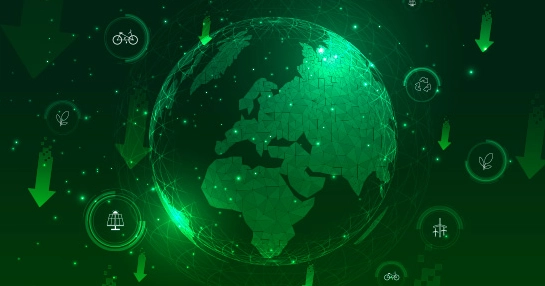GEP Insights kicks off the new "Covid Response Series", discussing how companies in the Retail sector can and should handle the COVID 19 pandemic. Our guest is GEP VP Mukund Acharya.
Speaker:

Mukund Acharya
Vice President

Paul Blake
Director
Paul: This is GEP insights. I am Paul Blake. Welcome to the conversation. In this series, we're looking at the immediate impact of the Coronavirus pandemic on our businesses and the industry at large and we're looking at the strategies and tactics that organizations can use to mitigate the impact of this crisis and others potentially in the future. Today of course we're all focused on the immediate situation and the challenges that are right here right now. But of course, there has to be a longer-term strategy if we're to weather crises like this in the future. With me today to discuss these matters is Mukund Acharya, Vice President at GEP.
Mukund: Thank you, Paul.
Paul: If you would please tell our audience a little bit about yourself and about your experience in the field.
Mukund: Happy to do so. So hello everyone. My name is Mukund Acharya. As Paul mentioned, I am a Vice President and global delivery and GEP. I have about 20 years of experience, with probably the last 15 focused on retail and CPG sectors. My areas of focus have included merchandising strategy, supply chain and procurement. So, I would say probably in the last 10 to 12 years, the focus has been more on the procurement side looking at ways we can help companies in the retail space effectively use their assets and save money.
Paul: Thank you. Now with retail supply being in a very unusual place right now, can you begin by telling us what has been going on in the immediate run up to the corona virus crisis in the retail sector and what are you seeing happening right now?
Mukund: Yeah so, some quick background retail had a good resurgence between 2000 and 2005, may be in 2006. Then we had the crisis the financial crisis in 2008, and during that period Amazon started playing a bigger role in retail. They've always been in retail but the impact we started seeing was more outside the immediate space they had started building out their private label brands, they competed very aggressively in other areas outside the original books and CD segments. And so in the last five to seven years, retailers have really struggled against Amazon, and its e-commerce and both fulfilment capabilities. So, they walked into the COVID 19 crisis with all that baggage they had to deal with and struggle against Amazon and to some level of Wal-Mart and Target; and when COVID hit, they really didn't have a strong base to work from. The other challenge with their COVID-19 crisis was that even though the signs were seen in China probably in the November-December timeframe, there was really no sure strategy. Supplies were being impacted, the supply chain was being impacted, but the general feeling at least looking at North America was one of – it is something that'll happen, it may peak and then go away. Unfortunately, it didn't. And so, a lot of the retailers were caught flat footed once the supply piece dried up. The other thing we've noticed was that the revenue side was also impacted, some of it for luxury retailers such as SDL order in China; they're the ones that first noticed this impact. And then once it hit the U.S. and once the nation went into a lockdown, a lot of foot traffic disappeared. And so now these same retailers with their high fixed costs and stores had the double impact of sporadic to nonexistent supply but also even worse, non-existent demand. And so now we're in the situation where they're hit on both sides, they are in a firefighting mindset of basically looking to survive.
Paul: So with the immediate impact of COVID 19 coming on top of those other pressures, do you think this is really very damaging to the sector? Do you think that retail can recover to where it was prior to the pandemic or will we see a mix of those who make it through relatively unscathed and those who don't?
Mukund: Well, I don't sound like a pessimist, but unfortunately, I think this is another impact that a lot of retailers will struggle to recover from. I think the big ones, Target, Walmart, are good examples they'll survive. They might even thrive. The smaller ones – the most mass merchandise retailers such as Macy's and even Nordstrom – when they come out of this, they'll come out a much smaller company. And I'm not quite sure what they view as their strategy, but at this point it looks like they will be significantly impacted by this.
Paul: Okay. What are you seeing as the type of responses that companies are making right now to the immediate crisis.
Mukund: So they've actually moved fairly aggressively. We've seen on the retail side, we've seen store closures, we've seen furloughing of employees, we've seen a reduction or complete cancellation of our large capex projects. The overall overarching mindset is one of saving money and it's not saving money with long-term strategic programs. We need to save money in the next 30, 60 and 90 days. So just broadly a combination of things we've seen – one is focusing on a reprioritization and refocus, so moving away from some of these large capital-intensive transformation type projects to something more tactical, looking at demand management to cut spend, where possible, down to zero. Looking at rapid sourcing programs that drive savings today, they are the ones that focus more on negotiations of incumbent suppliers rather than doing longer-term RFD. These are not optimal, but these are the best things they can do at this point and none of them are doing it. The other thing to which we see it, but not consistently, is having a very focused response teams are SWAT teams that that really target savings across the organization and have a strong mandate from the CEO. This is something that's critical given the time component and so we've seen it in a few retailers but it's not something that we've seen consistent across all. That I think is one of the gaps that hopefully we can fill or retailers can fill quickly, making quick decisions and implementing them as their only survival mechanism.
Paul: Interesting. You mentioned the postponement or the hiatus of some major projects, capex innovation projects, and so on. But is there a risk that by focusing right now on the short term or focusing on pure cost savings there's some of those projects that might well have been essential for the longevity of those companies especially in the retail sector. Those transformational projects that should be getting those organizations onto the right footing for the longer term, say, is a risk that some of those projects might be shelved indefinitely and that there won't be an appetite to return to them because of the fear that investment should there be a second wave of the crisis or indeed some other crisis that?
Mukund: I think it will impact some of them. Unfortunately, they don't have the luxury of doing both and so it is little bit of mortgaging your future for today's gains. Having said that, yes, they should focus in the short term because that is a survival mechanism. Again, not across every company in the industry, but select companies and most of them know they are if they are an apparel retailer that's struggling or was struggling even before it got into the situation. They have no flexibility at this, but they have to; they have to cut as they have to survive the next three months, otherwise longer-term programs won't save them. In some cases, there is a danger especially if you look at companies that have a strong direct competition with Amazon. Amazon’s strength, fulfillment and distribution, its technology platform is outstanding. But we do see that a lot of the larger companies who are relatively well funded are looking to continue to focus. It does help them really focus on what makes a difference. I think some of the, probably the less soft on the ROI side, less softer projects and programs will get shut down. It will get looked at very carefully in the future, but that's a decision that every company has to balance.
Paul: Yes. Let me ask you this, what role do you think technology has to play in the immediate and longer-term responses are you seeing organizations for example hampered by the current technology they have with it being slow to adapt and lacking the agility that the companies are looking for right now? Also, are you seeing any that are making the right moves because they have more flexible systems behind them?
Mukund: Technology is here to stay. I think that's a given. It's a question of, as you said, what technologies are being used. So having a giant ERP system is great. It gives you the flexibility to run your, the backbone for your company. But there are lots of other systems that focus on supply chain visibility or focus on the ability to manage and maintain spend control towers. And we look at the money you save on a sourcing event is reflected in the budget — the budget to pay capabilities. The companies that are doing these I think are very limited in number. I think some of it is simply the fact that these technologies are not that well known, or they were not as well-known as they were as they are now. They are niche, but they are actually critical. They're almost mission critical. Now, as a retailer knowing where all my inventory stocking finds, knowing exactly how much product I have at every node in my system, the cost to move the inventory the cost and hold the inventory, being able to dynamically balance inventory or pull them across multiple channels. Very few systems can do that effectively. So, the investment in technology isn't an investment in a three-year ERP system, it’s investment in a three-month system that gives you this visibility that lets you make these decisions. Some of them will impact today, for example, budget to pay; and some of them will impact and support the companies after the next three to six months when business and operations now move forward. There's much more clarity in the supply base. There's much more visibility into inventory and the costs and challenges of managing that inventory.
Paul: Well, it's been very interesting. Thank you so much. If I could ask you to summarize the advice you have for companies especially in the retail sector. In just a few key points for today tomorrow and the longer term, what would what would you say?
Mukund: I think the short-term cut capex focus on a rapid sourcing module, or rather say capability, focus on a team of professionals who can quickly go through the spend quickly identify and implement projects with savings, especially encumber negotiations. People who can work with suppliers and understand, especially for the tier 1 critical suppliers, what are some of these their capabilities that could help you in the short term. So, in other words, look for cash flow savings and move quickly; make these changes and make them in a…you know, make big changes rather than small incremental ones –that's in the short term. In the longer term, the ability to look at your supply chain more holistically in terms of having visibility are looking at the ability to handle budget-based systems. Those would be critical. The other piece that people have spoken about for years and it's always never really implemented well is supply risk management. And so, when you look at supply risk, it's not simply knowing the financials of your supplier but understanding the environment they operate in. And looking at their suppliers, we sometimes stop at the tier 1, the level one, where we need to know who our suppliers’ suppliers are, how they will be impacted in any crisis, how will they handle changes to their capacity. So, having a more holistic view of supply risk and then having a supply chain that can adjust to that is key. But that's not a quick fix. That is a longer-term fix and it takes a certain amount of focus investment and risk to make sure that those are implemented properly.
Paul: Well, thank you, Mukund. Very interesting perspectives in a time of great complexity for this and other sectors. Thank you for your time.
Mukund: Thank you. It’s a pleasure.
Paul: And thank you everyone for listening to this episode of GEP insights, the intelligent procurement and supply podcast. I’m your host, Paul Blake, and I look forward to speaking to you again soon.











